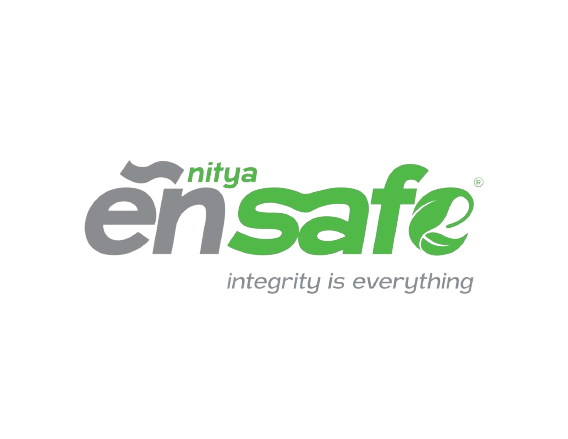With the growing population and increasing urbanization, the importance of efficient wastewater management cannot be overstated. Sewage treatment plants play a crucial role in safeguarding the environment and public health by treating and purifying wastewater before its release into natural water bodies.
One of the most effective methods in wastewater treatment is the activated sludge process. This article explores the essential components and operational aspects of an activated sludge plant.
Understanding the Activated Sludge Process
The activated sludge process is a biological wastewater treatment method that employs microorganisms to break down organic matter and pollutants in water. It involves introducing a mixture of wastewater and microorganisms into aeration tanks, where these microorganisms consume and metabolize the organic materials. The microorganisms form flocs, which are later separated from the treated water in a settling tank. The treated water can then be discharged or subjected to further treatment to meet specific regulatory standards.
Key Components of an Activated Sludge Plant:
- Aeration Tanks: The core of the activated sludge process lies within these tanks, as they are responsible for supplying the essential oxygen required for the development and survival of microorganisms. Effective oxygen transfer is crucial for promoting microbial activity and has a direct influence on the efficiency of the treatment process.
- Settling Tanks (Clarifiers): Following the aeration stage, the mixture of wastewater and microorganisms is directed into settling tanks. Within these tanks, the activated sludge particles gradually settle to the bottom, leading to the separation of clarified water at the top.
- Return Sludge Pump: The pump in use here is responsible for reusing a portion of the settled sludge, also known as activated sludge, by returning it to the aeration tank. This essential process, referred to as Return Activated Sludge (RAS), plays a critical role in sustaining an ideal population of microorganisms, ensuring the efficiency and stability of the treatment system.
- Sludge Treatment and Disposal System: Excessive sludge, often referred to as surplus-activated sludge or Waste Activated Sludge (WAS), is systematically extracted from the system and subjected to treatment before it can be appropriately disposed of. This step is vital in minimizing the environmental footprint and upholding the sustainability of the plant’s operations.
The activated sludge process is highly effective in removing organic matter, suspended solids, and nutrients from wastewater. It involves several key stages:
- Aeration: Within the aeration tank, microorganisms are combined with incoming wastewater and supplied with oxygen, facilitating the growth of microbes and the breakdown of pollutants.
- Settling: Following the aeration stage, the mixture enters the settling tank, where activated sludge particles settle at the tank’s base, while clarified water ascends to the surface.
- Sludge Return: A segment of the settled sludge is returned to the aeration tank, ensuring a continuous presence of active microorganisms for the treatment process.
- Excess Activated Sludge (WAS): Any surplus sludge undergoes additional processing to reduce its volume and stabilize its organic content before appropriate disposal.
Types of Activated Sludge
- Tapered Aeration:
The tapered aeration method is a technique that entails the gradual reduction of oxygen supply within the aeration tank, from the inlet to the outlet. This deliberate decrease in oxygen concentration exposes microorganisms to varying environmental conditions, resulting in enhanced treatment efficiency and notable energy savings.
- Step Aeration:
Step aeration involves dividing the aeration tank into multiple zones with varying oxygen levels. This strategy facilitates different stages of microbial growth and pollutant removal in each zone, thereby improving treatment efficiency and nutrient removal.
- High-Rate Treatment or Modified Aeration:
This method functions at elevated mixed liquor suspended solids (MLSS) concentrations in comparison to conventional systems. The increased concentration stimulates greater biomass activity and results in a more space-efficient wastewater treatment plant, which is particularly well-suited for regions with limited available land.
- Two-Stage Aeration:
In this process, two distinct aeration tanks are employed, each tailored for specific treatment functions. This approach enables aeration and settling to take place simultaneously in each tank, ultimately enhancing treatment efficiency and reducing the plant’s spatial requirements.
- Activated Aeration:
This method utilizes pure oxygen instead of air for the aeration process. This choice substantially boosts microbial activity and accelerates the degradation of pollutants, making it a suitable option for wastewater with high organic loads or specific industrial effluents.
- Reaeration:
This is the process of introducing fresh oxygen into the effluent before it’s discharged. This step is vital to ensure that the treated water attains the necessary dissolved oxygen levels to support aquatic life and preserve the ecological balance in receiving water bodies.
- Contact Stabilization:
In this process, wastewater is initially mixed with recycled activated sludge in a contact tank, where partial stabilization of organic matter occurs. The mixture is subsequently moved to aeration tanks for additional treatment. This approach is recognized for its capacity to manage shock loads and enhance the overall stability of the biological treatment process.
- Complete Mix:
The complete mix-activated sludge system guarantees the even mixing of wastewater and microorganisms within the aeration tank. This, in turn, ensures that all influent particles meet microorganisms, resulting in consistent treatment and effluent quality.
- Extended Aeration Method:
This method entails extended aeration and retention time within the aeration tank. This prolonged treatment permits more thorough breakdown of organic matter and nutrient removal, often rendering it suitable for small to medium-sized applications.
Factors Affecting Sewage Treatment Plant Costs:
Several factors influence the cost of a sewage treatment plant:
- Plant Capacity: The size and capacity of the plant significantly impact overall costs, with larger plants requiring more substantial investments.
- Technology and Equipment: The choice of technology and equipment can affect costs, with advanced solutions potentially leading to long-term savings.
- Land and Location: Site location, terrain, and environmental considerations can lead to additional expenses.
- Regulatory Compliance: Meeting stringent regulations may result in additional costs for specialized treatment processes.
- Operations and Maintenance: Ongoing operational and maintenance costs are crucial considerations during the planning phase.
- Sludge Management: Proper disposal or treatment of surplus-activated sludge adds to the overall cost.
- Energy Consumption: Energy usage for processes like aeration contributes to operating costs.
- Skilled Labor: Skilled labour availability and remuneration can affect construction and commissioning expenses.
- Contingency and Financing: Adequate contingency planning and financing choices impact the total project cost.
In conclusion, understanding the activated sludge process and the cost factors related to sewage treatment plants is crucial for effective wastewater management in an increasingly urbanized world.



